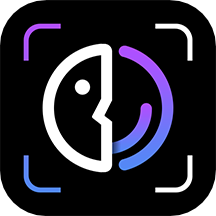


...记得自己公司曾经做一个战争场面的动画,用了CAT,十分迅速.这个插件的确强大.好与坏不去评价,反正只要解决问题就好.
...不说CAT,说下MAX本质的东西.
移除边,和点 


最终成形
材质我只是随便放个颜色区分而已 
[page]
增加个"多边形选择"修改器 
再来个"子级变换"
打开"中心"然后缩放,
可以看到黑色区域可变化大小
至于为什么这样,看看<MAX参考>就可以 
不好意思
是----- 
是--- 
再增加个"属性保持"修改器 
[page]
编写脚本---- 
解释一下 
看划部分------- 
再修改脚本,然后运行 
在属性保持修改器下出现=== 

[page]
结束
通过这简单的例子只是说明下自定义属性的灵活性.作为自定义脚本的基础. 


涉及的脚本参考(大家有空就翻译下,我只是匆匆的翻译了一下):
Attribute Definitions
Attributes can be added to an object via an "attribute definition". This is a syntactic construct in MAXScript that is similar to a scripted plug-in definition, but rather than adding a new plug-in class, a definition is built that can be used to add custom attributes and rollup UI to any number of objects at any time, through a special new function.
属性能通过一个"attribute definition"增加到对象。这是一个在MAXScript中依照造句法的结构,类似一个定义的脚本插件。但胜于增加一个类插件。建立一个定义能在任何时间增加自定义属性和UI展卷用于任何数目的对象。
NOTES:
The auto-UI connection between the parameters and rollout items via the ui and keyword is the same as the support in Scripted Plug-ins. You can treat attribute scripting as basically identical to scripting plug-ins, in terms of parameter, rollout setup and handler programming.
auto-UI在参数和首次展示项目之间连接通过ui和关键词和在Scripted Plug-ins支持一样。你能对待脚本像主要插件脚本同样在参数项目,首次展示设置和管理者编写程序方面。
Since 3ds max 5.1, scripted custom attributes can be applied to any MAXWrapper object - base objects, modifiers, materials, nodes, controllers, rootnodes, render effects, etc. The only place the UI for custom attributes is currently supported is the Material Editor and the Command Panel, so you will only be able to see any rollouts associated with the custom attribues on base objects, modifiers, and materials.
以前3ds max 5.1,脚本自定义属性能指定给任何MAXWrapper对象—基本对象,修改器,材质,节点,控制器,根节点,渲染效果 等等。唯一放置自定义属性UI当前支持是材质编辑和命令面板,你将仅仅在基础对象,修改者,和材料上能够看见任何与自定义属性有关的首次展示。
custAttributes.add <object_or_collection> <attributes_definition>[#unique] [BaseObject:<bool>]
Adds a set of attributes to an object or a collection. You can only add one custom attribute set of a particular attributes definition to an object, but you can have as many different attribute sets from different definitions as needed.
把一属性装置添加到一个对象或者一个控制器。 你能仅仅添加把定义的特殊属性的自定义属性装置放置到一个对象,但是你能同有从不同的定义有很多不同的属性装置以至你需要。
EXAMPLE:
custAttributes.add $weapon01 weaponData
Opening $weapon01 in the Modify panel will now display the "Weapon Parameters" rollout and allow them to be edited as can normal object parameters. You can use attribute definitions to add their defined sets of attributes to any object at any time. Any appropriate type of parameter can be animated, also, exactly as with scripted plug-ins.
The custAttributes.add() function can be applied to an object collection to add sets of attributes to a group of objects in one go.
在修改面板中打开$weapon01现在将显示“weaponData”展示栏并且允许他们作为能正常的对象参数被编辑。 你能使用属性定义来在任何时间添加他们把属性的定义装置到任何对象。 任何适当的类型的参数也能动画,同样作为脚本正确地插入。
custAttributes.add ( )功能能被运用于对象控制器来以便添加把属性装置为一群对象的一个中去。
custAttributes.add $weapon* weaponData
Adds a separate set of these custom attributes to all objects whose names begin "weapon" in the scene.
添加它们自定义属性一个单独装置到当所有对象在场景中的名字都是"weapon"时
attributes "Game Data"
redefine:def
(
parameters ...
rollout ...
)
This expects an existing attributes definition as the value given in the redefine: parameter and will update it to the definition that follows, and update any custom attributes made from that particular definition value. In the example, this would update $box01 and $box02.
这是盼望现有的属性定义同样地值从重定义中获得:参数和将更新它到下列的定义,和更新任何的定制属性由特殊的定义值制成,在例子里,将会更新$box01 和 $box02。
Alternatively, you can use the custAttributes.redefine method:
做为选择,你能使用custAttributes.redefine方式:
custAttributes.redefine <def> <definition_string>